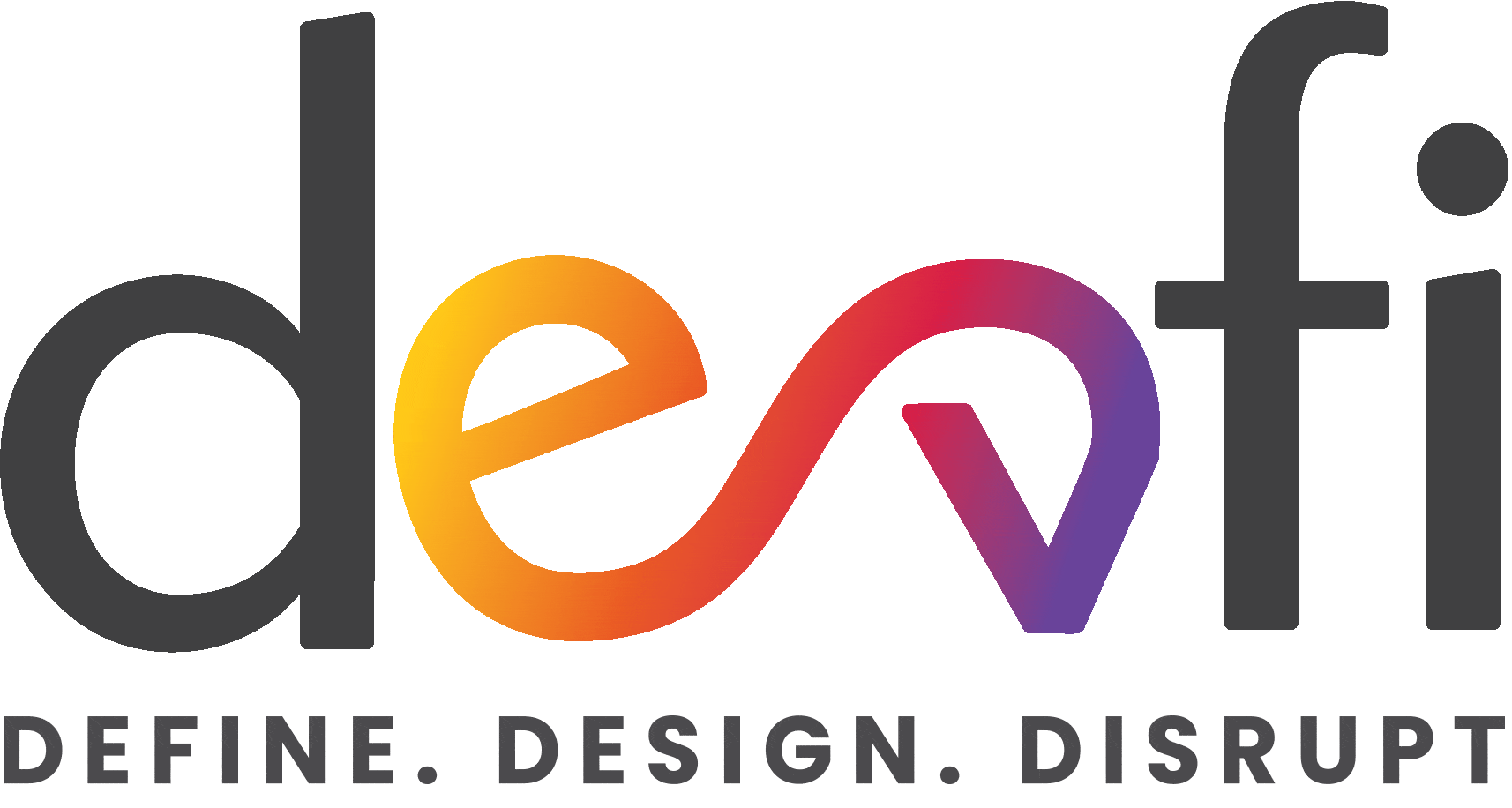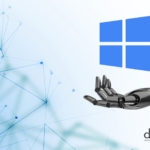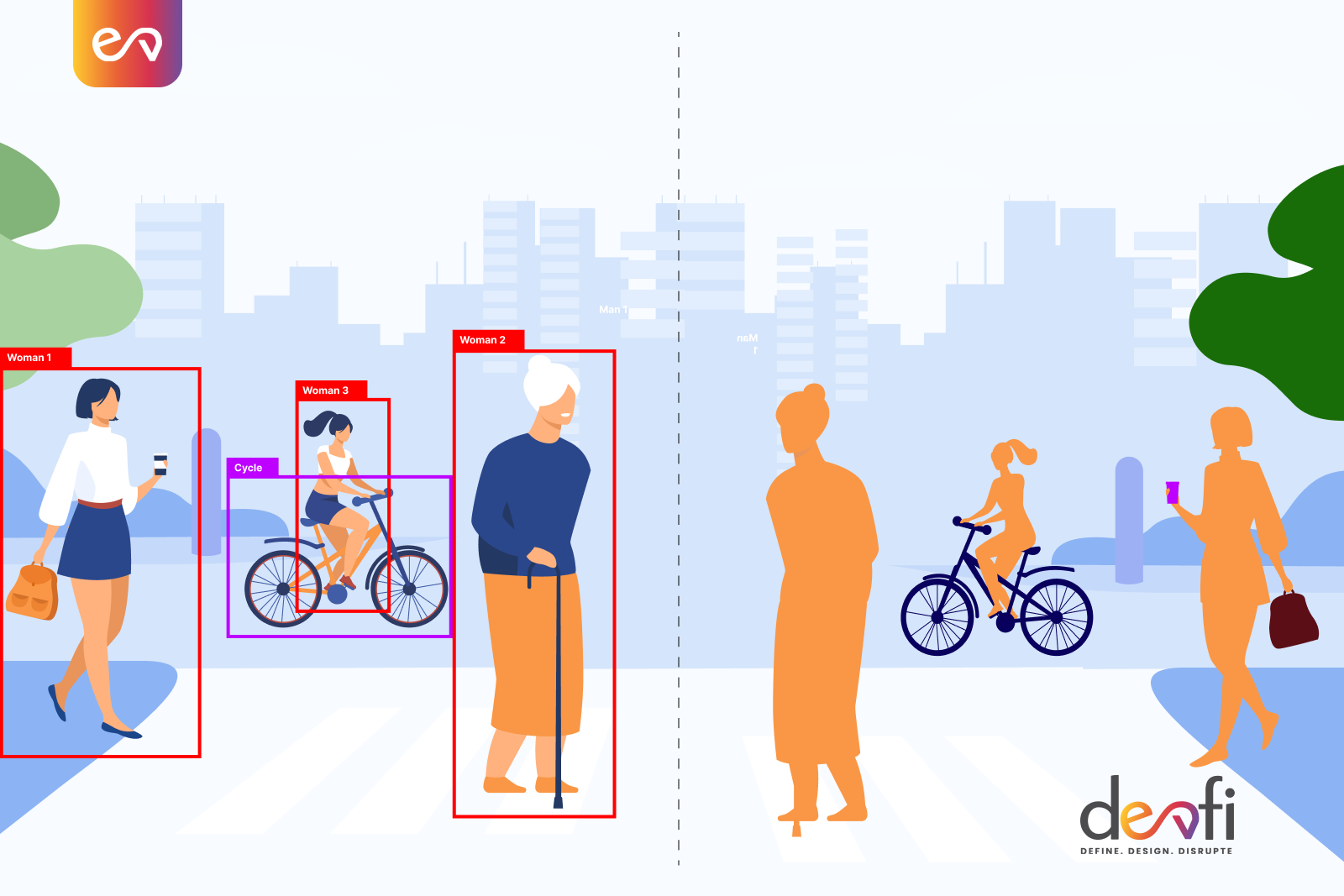Image segmentation is a process of dividing an image into different regions. It is a fundamental task in image processing, computer vision and machine learning. There are various types of image segmentation algorithms such as region growing, region-based active contour models and others. In this article we will discuss image segmentation, its benefits and use cases for a business.
What is image segmentation?
Image segmentation is the process of assigning a label to each pixel in an image. This is done to separate the foreground from the background. This can be done using machine learning algorithms to classify objects in an image, and then deciding which object is part of which segment. Image segmentation can be used for many different applications such as medical imaging, self-driving cars or any other application that requires a precise delineation between things (foreground) and nothing (background).
The most common approach to perform image segmentation is by using machine learning algorithms. The following techniques are widely used:
- Clustering techniques like k-means or hierarchical clustering are used to group pixels into clusters based on their similarity.
- Classification techniques like Support Vector Machine (SVM) or Deep Neural Network (DNN) are used to assign labels to pixels based on their features.
The most common way of doing this is through a convolutional neural network (CNN). The CNN is trained on a set of images that are segmented, and based on the training it will be able to classify new images into categories. The CNN has two main components: the input layer and the output layer. These layers consist of neurons that take in information from one or more previous layers and pass along information through weights that are determined by the training data.
For example, let’s say we want to train our CNN on dogs vs. cats. We start by taking an image of a dog (which would have been labeled as a dog) and passing it through our layers until we get to our output layer, where we’ll have an output value for whether it’s a dog or cat (0 for cat, 1 for dog). Then we take another image—this time of a cat—and do the same thing with it, until we get an output value saying whether it’s a dog or a cat.
Image segmentation using Machine Learning is used to divide an image into multiple segments using different classifiers, which can be processed separately. This process enables the user to make use of the information contained in each segment and is useful for many applications.
Image segmentation benefits
Image segmentation offers many benefits to businesses that are interested in developing their own image-processing systems. Segmentation can be used for many different tasks, such as:
- Image classification: Segmenting an image into areas that represent specific categories will allow you to classify the image based on its content. This could be useful for industries such as medicine or textiles where it would be helpful to classify certain types of objects within an image.
- Object detection: Object detection involves detecting objects within an image and labeling them in order to understand their size and shape. This type of segmentation can be useful for identifying objects within images taken by drones or other devices that require high precision measurements about what they captured.
- Image stitching: Image stitching involves creating high-quality panoramic images from multiple smaller ones. This type of segmentation could be useful for creating 360° photos or videos where you want to show off everything around you at once (such as during a wedding).
Applications of image segmentation In businesses
Image segmentation has many applications in business. It can be used to optimize the production of a product by analyzing its parts, or it can be used to identify customers’ preferences for a given product and use that information to offer personalized products and services.
One popular application of image segmentation is optimizing the production of a product by analyzing its parts. This is particularly useful when you have many different parts that need to be assembled together in order to form a complete product; if you can identify which parts are defective or missing before you assemble them all together, it’s much easier to ensure that your final product will meet customer expectations.
Another popular application for business is customer analytics. Businesses often want to know what their customers look like so they can tailor their marketing efforts accordingly. With image segmentation software, they can quickly analyze customer photos and identify specific demographics (such as age or gender). This allows them to better understand where they should focus their marketing efforts so they can reach more people who will buy their product or service and bring in more revenue!
Another application of image segmentation is identifying customers’ preferences for a given product and using this information to offer personalized products and services. If you know what people like about your products, then you can use their feedback on how they feel about certain features or characteristics (e.g., “I like the way this watch fits on my wrist”) as inspiration for future designs or improvements on existing models. This can help improve sales while simultaneously increasing customer satisfaction with your brand overall!
One of the interesting applications of image segmentation for businesses is for product labeling. For example, if you are selling food products, you want to make sure that your labels are accurate and easy to read. When you are labeling a product with an image of itself, it can be difficult to make sure that all parts of the image are visible and properly labeled. With image segmentation software, however, you can easily determine which parts of an image need labeling and which do not so that your labels are accurate and easy-to-read.
Image segmentation is used in many different industries, including medical imaging, where it allows doctors to see what’s going on inside their patients’ bodies without having to cut them open; marketing, where it allows companies to track consumers’ movements around stores and advertise to them based on their location; security, where it allows companies to detect threats like intruders or bombs; and even wildlife conservation efforts, where it allows researchers to track animal migration patterns.
Image segmentation use cases
Here are five key use cases of image segmentation in various industries:
- Security: Image segmentation can help businesses detect potential security threats by identifying whether someone is carrying weapons or other dangerous items. The technology can also be used to monitor public areas for suspicious behavior and alert authorities if something seems amiss.
- Retail: In retail stores, image segmentation allows companies to track customer behavior and make changes based on what customers buy most often or what products they seem to prefer. This allows stores to better understand their customers’ needs and improve their offerings accordingly.
- Healthcare: In healthcare settings, image segmentation systems can be used to analyze patient records and determine who is most likely to benefit from certain treatments based on their health history or family history (e.g., heart disease). These systems would then recommend certain treatments for each patient
- Logistics: Image segmentation can be used to determine the contents of boxes and crates before they are shipped, ensuring that they are filled correctly and safely.
- Manufacturing: Image segmentation can be used to analyze images of products in order to identify any defects that may have been overlooked during manufacturing or packaging processes. This saves money for manufacturers who might otherwise have had to recall defective products or pay for expensive recalls of the entire batch due to a single defect that could’ve been caught earlier with this technology!
Image segmentation is an incredibly important tool in the business world. It allows companies to gain insights into their products and services, as well as their customers. If you’re looking for a technology partner or need expert advice on how to leverage image segmentation for your business, we recommend taking advantage of our free consultation and get unbiased advice from our experts here.






